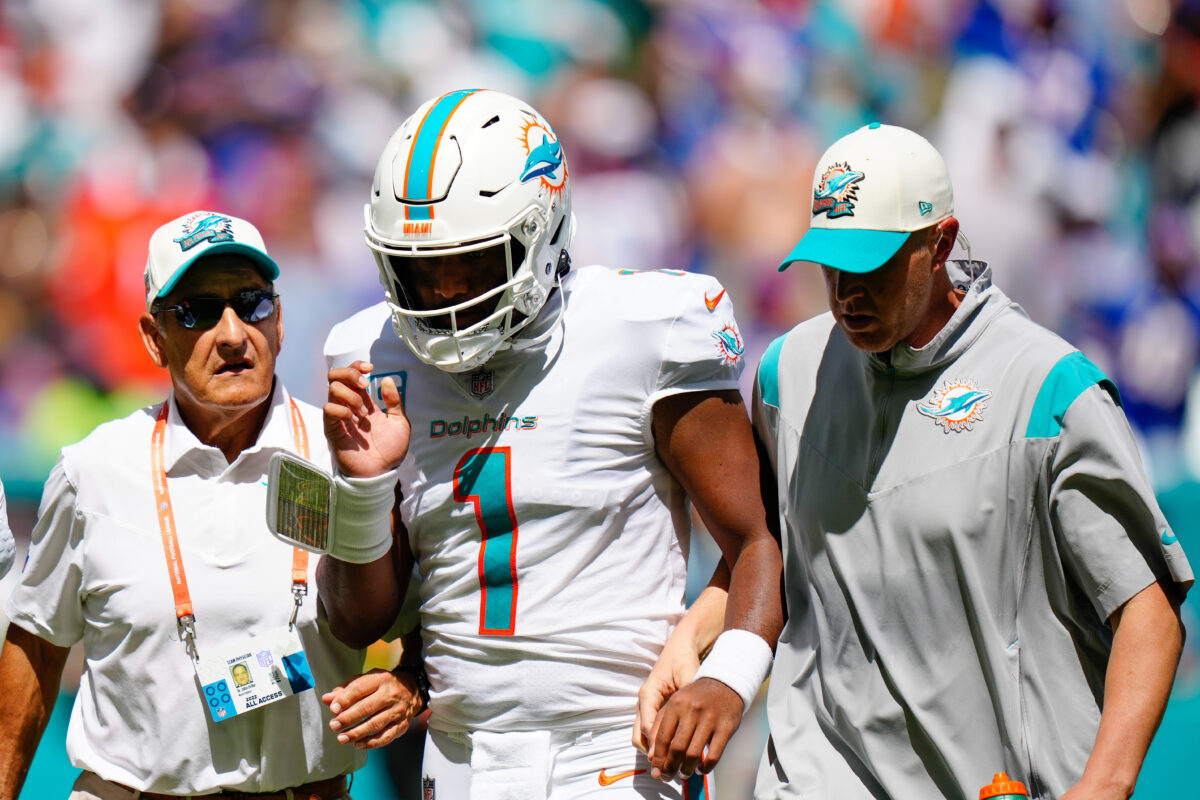The NFL and NFLPA announced on Saturday an agreement that Tua Tagovailoa’s apparent head injury on Sept. 25 in the Bills-Dolphins game went against protocols for such situations.
In a joint statement on Saturday, both parties agreed that “the outcome, in this case, is not what was intended when the protocols were drafted.”
While the investigation determined that the team medical staff and unaffiliated medical professionals followed the steps of the Protocol as written, the NFL and NFLPA agree that the outcome in this case is not what was intended when the Protocols were drafted. As such, as has been done in previous cases, based on the advice of the parties’ respective medical experts, the Protocol will be modified to enhance the safety of the players. Specifically, the term “ataxia” has been added to the mandatory “no-go” symptoms. “Ataxia” is defined as abnormality of balance/stability, motor coordination or dysfunctional speech caused by a neurological issue. In other words, if a player is diagnosed with “ataxia” by any club or neutral physician involved in the application of the Concussion Protocol, he will be prohibited from returning to the game, and will receive the follow-up care required by the Protocol.
Tagovailoa’s head hit the ground and he wobbled when he got up against the Buffalo Bills.
He went to the locker room with a head injury. After passing the locker-room evaluation, Tagovailoa returned to the game.
Following the win, both the team and quarterback claimed he had stumbled because of a back injury.
The following Thursday against the Bengals, Tagovailoa was violently sacked and suffered a concussion.
The NFLPA terminated the unaffiliated neurotrauma consultant who initially evaluated the quarterback during the Bills game.
